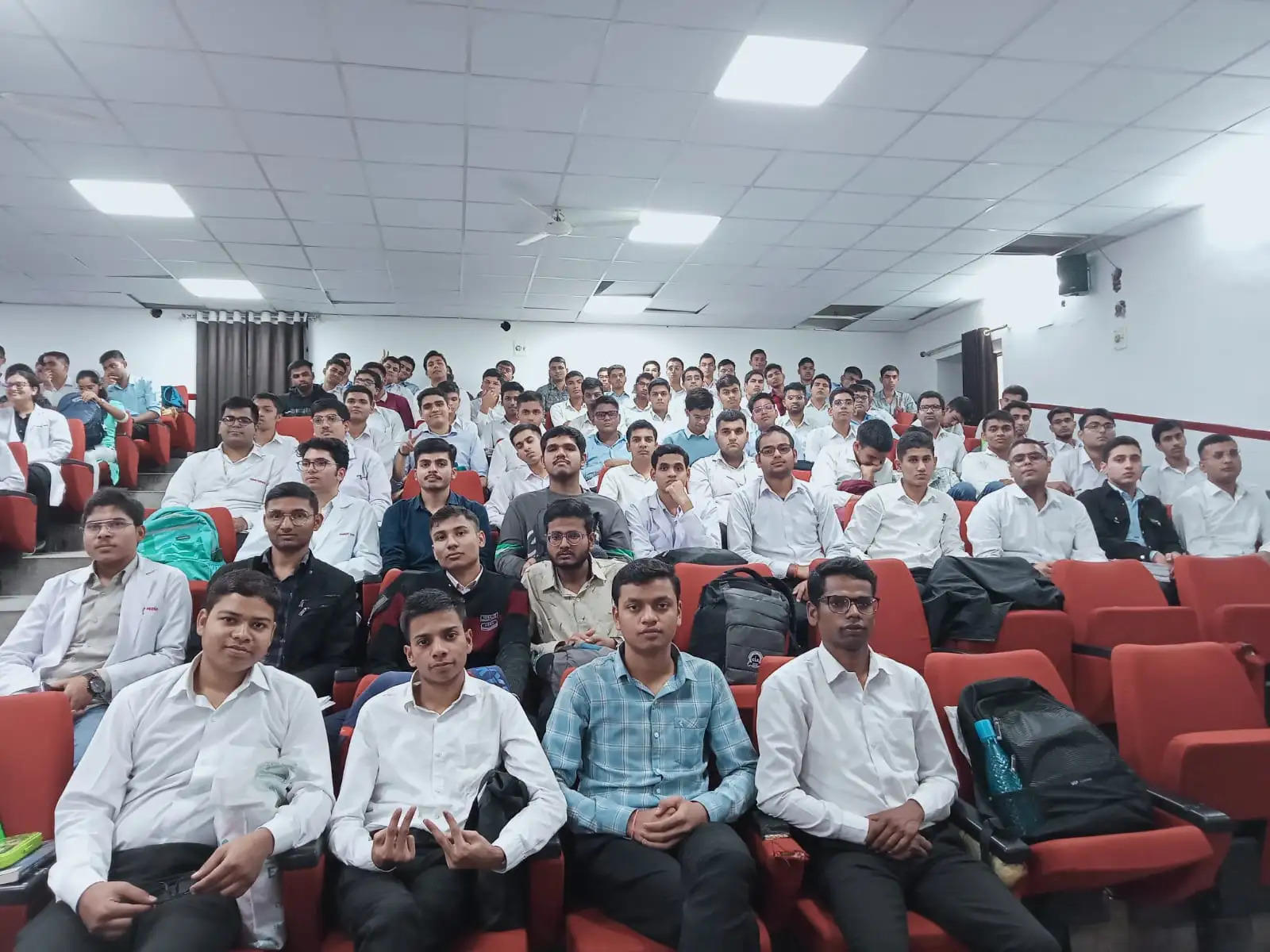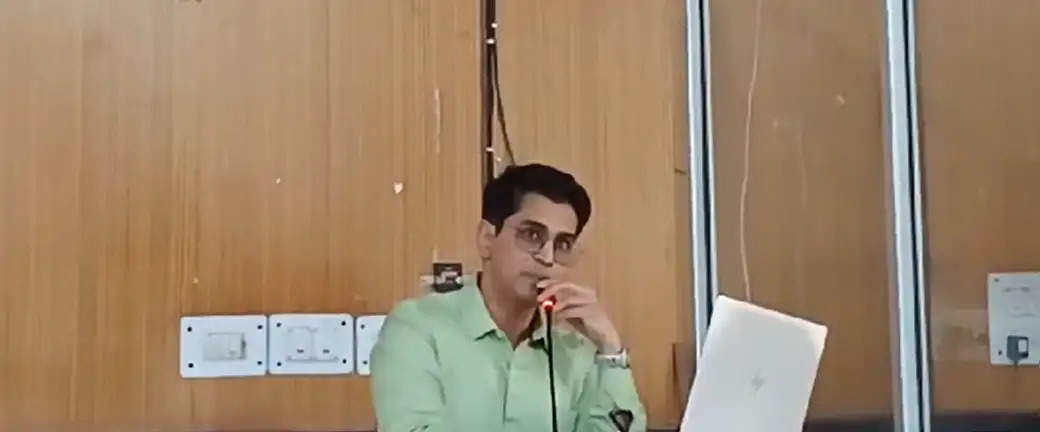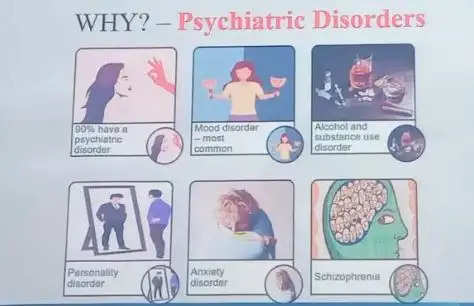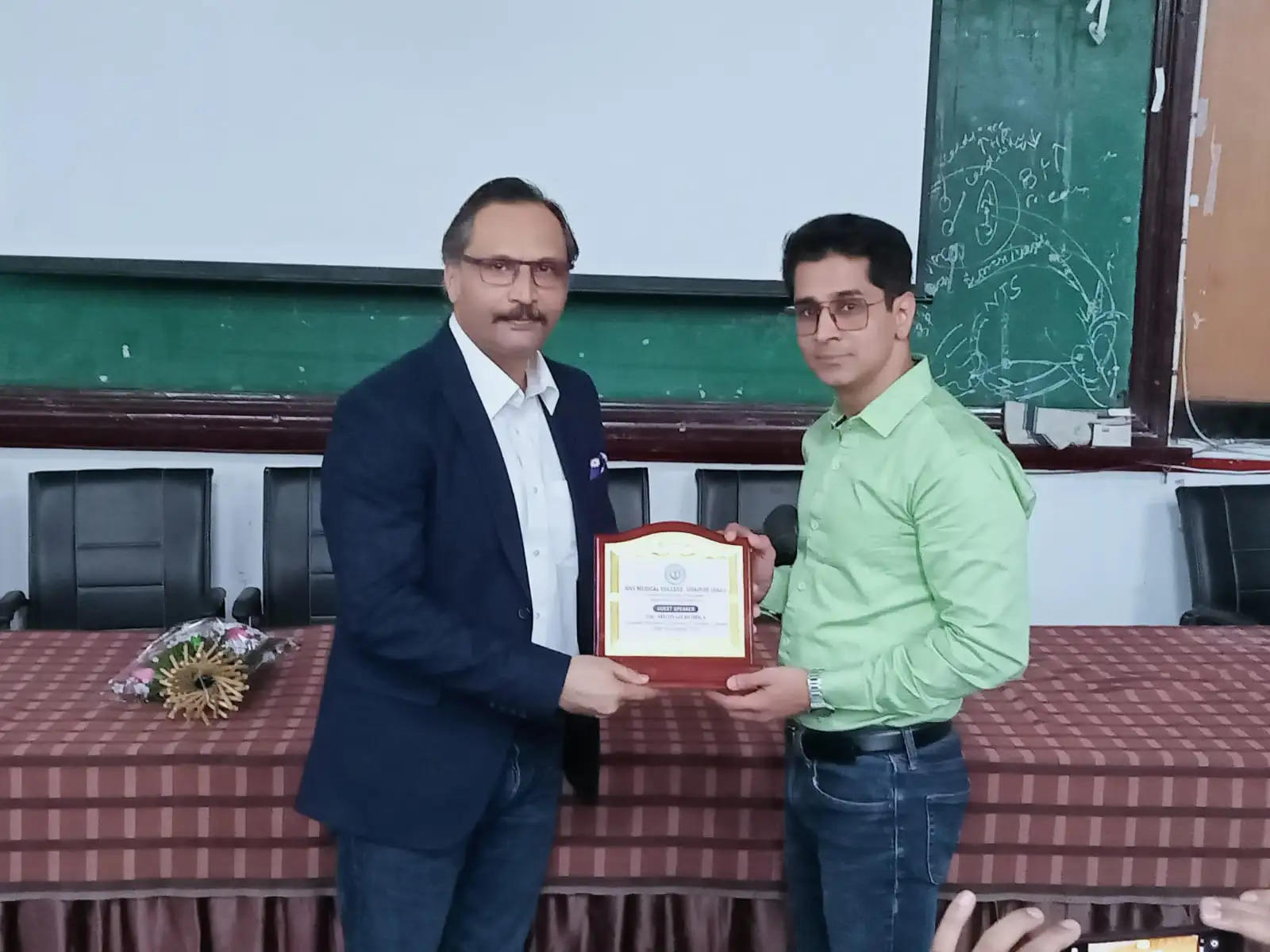Understanding Suicide: Awareness Seminar by Dr. Miqdad H Bohra at RNT Udaipur
A seminar on Awareness of Various Aspects of Suicide was held at the RNT Medical College, Udaipur by Dr. Miqdad Hussain Bohra, an accomplished medical professional specializing in Sleep Disorders and Psychiatry. He shed light on the complex and often misunderstood topic of Suicide. Dr. Bohra, an Assistant Professor at the Faculty of Medicine, University of Toronto and Northern Ontario School of Medicine, Canada, discussed various aspects of suicide, aiming to increase awareness and promote prevention.

Defining Suicide: Beyond the Act
Dr. Miqdad explained these aspects at the beginning of the seminar, providing a clear understanding of what constitutes "suicide”.
- Ideation - This covers a range of thoughts and wishes with Suicide. Simply put, it is when someone is thinking about ending their own life.
- Attempt - This is a self-destructive action done with intent to end one's life. In simpler terms, it is when someone tries to harm themselves with the purpose of causing their own death.
- Behavior - Suicidal behavior isn't just about completed suicide; it also includes different types of attempts, ranging from high lethality to low lethality. Essentially, any action taken with the intention of ending one's life falls under this category.
Dr. Bohra emphasized that suicide encompasses more than the act itself. It begins with suicidal ideation. By giving an example, he said that thoughts of not waking up is itself a progress to suicide attempts and may culminate in suicidal behavior. The age factor is crucial, with a notable concentration of suicide incidents occurring in the 20s and during the teenage years.
Is it a Problem?
It is not just an individual concern - Suicide is a significant public health issue. Globally, it stands as the 18th most common cause of death, and shockingly, it claims the spot as the second most common cause among those aged 15 to 29 years. However, there is a likelihood that the actual numbers are higher than reported. Many cases might be underreported due to deaths being labeled as unnatural or undetermined causes. The impact isn't only in the lives lost. For every lethal attempt, there are 10 to 20 non-lethal attempts, illustrating a broader scope of the issue.

Taking a closer look at Indian statistics, the situation is more pronounced, with a rate of 12.7 suicides per 100,000 people. Dr. Miqdad provided valuable insights while continuing the discussion on this critical topic.
Understanding the Demographics: Men, Women and the Elderly
Examining suicide across demographics, Dr. Bohra highlighted that men tend to have more completed suicides than women, attributing it to difficulties for men in expressing their emotions. The elderly also face an increased risk. Mental health plays a pivotal role, with 60% of suicides linked to Mood disorders like Depression and Bipolar Disorder. Notably, 90% of those who attempt suicide have a Psychiatric Disorder, including Schizophrenia.

"Suicide demographics in India are complex and influenced by various factors. Some general trends have been observed" - Dr. Miqdad Bohra
-
Age & Gender: Adolescents and young adults, Agricultural sector (farmers), doctors and students.
-
Geographic Variations: Agrarian areas and areas with economic challenges, rural vs urban areas.
-
Marital Issues: Marital conflict, family disputes.
-
Mental Health Factors: Mental illness and stigma associated with mental illness and suicide.
-
Educational Background: High stress due to competitive exams.
-
Means of Suicide: Pesticides in rural areas and access to means can influence choice of method
-
Societal and Cultural Factors: Stigma, Expectations and Traditional Gender Roles.
Medical and Neurological Factors
Delving into the reasons behind suicide, Dr. Bohra touched upon medical and neurological disorders. The Stress Diathesis Model, involving the interaction between vulnerabilities and stress, was discussed. Internal and external stressors, heightened perception of emotional distress, distorted social cognition, and greater emotional influence on decision-making contribute to the pathophysiology of suicide. Alcohol and substance use further escalates the risk.
He illustrated this point by suggesting that individuals who have experienced past trauma are more prone to engaging in suicidal behavior.
Doctors at Risk
In a sobering revelation, Dr. Bohra discussed the heightened risk of Suicide among doctors. Despite their extensive medical knowledge, Doctors often hesitate to seek help, making them more susceptible to succumb to Suicide. The seminar stressed the need for open dialogue and support within the medical community.
Preventing Suicides: Strategies That Make a Difference
Dr. Bohra highlighted the preventability of Suicide, emphasizing the importance of recognizing short, impulsive decisions over mental illness. Knowing someone who has attempted suicide provides an opportunity for intervention through communication, treatment, and the removal of negative thoughts.
- Education - He stressed the importance of spreading awareness and knowledge about suicide prevention among those who can make a real impacts such as schools, hospital and media.
- Treatment Options: Providing medical treatment and Psychological therapy. Dr. Miqdad emphasized the need for both medical and therapeutic interventions to address the root causes and provide support.
- Screening High-Risk Individuals: Identifying and closely monitoring those at a higher risk. He highlighted the significance of early detection to intervene and support individuals who may be more susceptible to suicide. He gave an example by saying that people often mask themselves meaning no matter if they are suffering from mental illness they always hide it from others by acting normal.
- Follow-Up Care After Suicide Attempts: Ensuring ongoing care and support for individuals who have attempted suicide. The importance of continuous assistance to prevent future attempts and promote recovery of these individuals.
- Restricting Self-Harm: Implementing measures to limit access to methods of self-harm. Most of the individuals especially teenagers are likely to attempt suicide in impulsive conditions. So restricting access to potentially harmful means can act as a preventive measure, reducing the likelihood of impulsive decisions.
CONCLUSION
Dr Miqdad Bohra further concluded by saying that every year, more than 800,000 people lose their lives to suicide globally, and a whopping 77% of these happen in countries with lower to middle incomes. The most common ways are hanging, pesticides and firearms; pointing to the urgent need for targeted prevention efforts. There is a strong link between suicide and mental health issues or previous suicide attempts, highlighting how important it is to support mental well-being. Many suicide attempts happen suddenly during crises, showing that support during tough times is crucial. Certain things, like feeling alone, facing abuse, violence, disasters, conflicts, or profound loss, strongly connect to suicide. Some groups, like refugees, migrants, LGBTQ folks, prisoners, and indigenous people face higher risks due to discrimination.
Dr. Miqdad H Bohra's seminar served as a valuable resource in understanding the intricacies of suicide. By fostering awareness, promoting prevention, and encouraging open conversations, it aims to contribute to a world where lives can be saved through collective understanding and support.
To join us on Facebook Click Here and Subscribe to UdaipurTimes Broadcast channels on GoogleNews | Telegram | Signal



